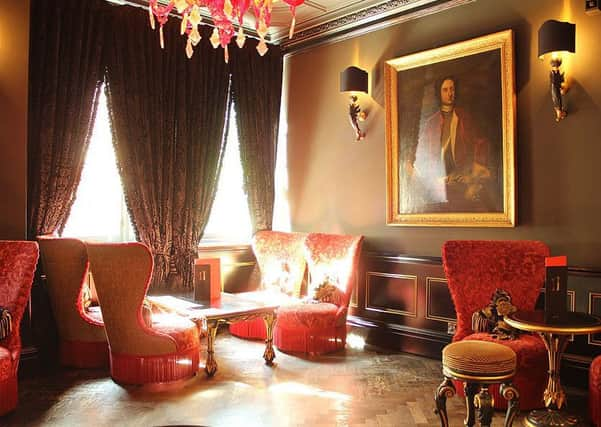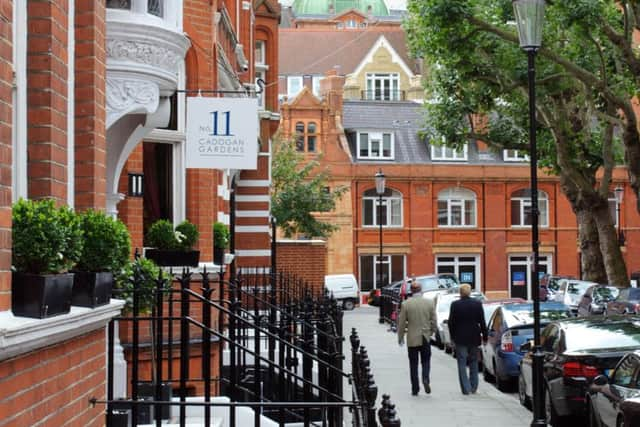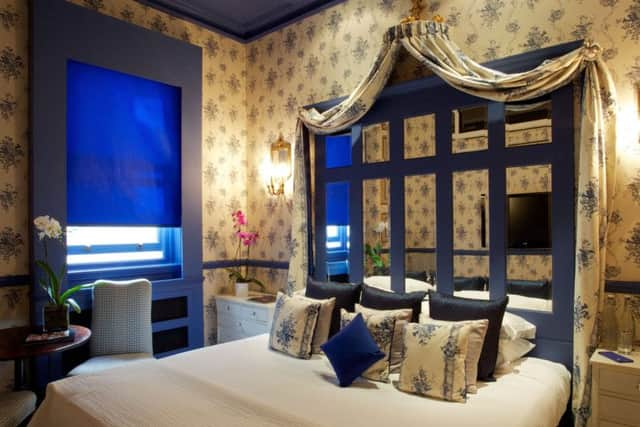Travel: A trip back in time to Chelsea


When I first visited Chelsea and Knightsbridge I was 20 years old and had travelled to London on the overnight bus from Glasgow’s Buchanan Bus Station. The purpose of my visit was to interview Martha Gellhorn, doyenne of female war correspondents and the third of Ernest Hemingway’s five wives. In 1991 she was in her eighties, increasingly blind and lived in a small, but chic apartment (flat seems too common a word) in Eaton Place. I remember as I left her red brick apartment block with its neat garden, protected by black iron railings, pondering how pleasant it would be to live here. Almost 25 years later I got my wish, if only for a night or two, as I checked in to the plush embrace of 11 Cadogan Gardens, a boutique hotel elegantly chiseled out of four townhouses, just a few streets down from her former abode.
The journey south had once again hugged the earth, rather than taken to the skies, as I’ve always believed that London should be rolled into rather than swooped down upon. The Virgin rail service from Glasgow had delivered me to the capital in four-and-a-half hours in relative comfort, and soon one of London’s black Hackney cabs had dropped me at the door of 11 Cadogan Gardens.
Advertisement
Hide AdI’ve always thought that staying in a discreet, though luxurious London hotel is an opportunity for a spot of time-travel as much as an exercise in the good life. With polite, accommodating staff, comfortable rooms, a well-stocked bar and the bustle of London on the doorstep, one could just about imagine oneself as an Edwardian gentleman in town for a little respite from the monotony of the country estate.


Certainly the room the hotel had provided me with did little to dissuade me of such illusions of grandeur. The luxury suite was entered via its own front door off Cadogan Gardens and offered, as well as a huge four-poster bed, the alternative comforts of a vast be-cushioned sofa-bed which prompted me to upgrade myself from Edwardian gentleman to visiting Middle Eastern pasha. I also particularly liked the fireplace in the bedroom, although I have to say that my favourite room in the hotel was actually a tie between the drawing room, with its Helmut Newton prints, a touch incongruous but stylish nonetheless, and the library with its neo-classical busts, sofas and a fine array of smartly bound reading material for those whose Kindle has gone kaput.
The first night I was not in the mood for the fine dining of the hotel’s Tartufo restaurant, with a contemporary menu by Manuel Oliveri and which has had great reviews, and opted instead for a simpler meal, though still delicious, in the hotel’s bar, after which I retired to the hotel’s outdoor terrace for coffee and to, briefly, smoke a cigar before a downpour prompted a change of plans.
As London is perhaps my favourite city in the world – a tie with Los Angeles – I alway try to explore the immediate vicinity of where I am staying, rather than tear across town. So the next day I embarked on a leisurely tour of Knightsbridge and Chelsea. The hotel is less than a two-minute stroll from Sloane Square, which faces the famous King’s Road and along which I strolled before turning left on to Wellington Square, where I stopped in front of No 30. This is believed to be the home of James Bond, as it once belonged to a friend of Ian Fleming who then had his secret agent move into the “little plane tree’d square off the King’s Road” where he was diligently attended to by his elderly Scottish housekeeper. It was a good investment on the part of 007 as it was recently purchased for £6.3 million.
I then headed down towards a hidden treasure of London, the Chelsea Physic Garden, established in 1673 as the Apothecaries’ Garden and the second oldest botanical garden in Britain, after the University of Oxford’s garden, which was founded in 1621. It isn’t very large, and costs £9.90 to enter, well £9 if you insist on stripping out the voluntary 90p donation (but who would?). However, it has a magical, rather beguiling atmosphere, as well as a very good restaurant and cafe.


On this occasion I didn’t stay for tea as I’d already planned to lunch at Colbert, the grand European café which sits next to the Royal Court Theatre in Sloane Square. It’s a wonderful place to while away an afternoon, either inside in the leather booths or outside on the terrace where I eventually settled down. A quote by Alfred Polgar on the menu captured the atmosphere rather well: “a place for people who have to kill time so as not be killed by it.”
Advertisement
Hide AdSadly, my brief sojourn as an entitled Edwardian gentleman was coming to an end and it was with great regret that I packed up my bag and bade farewell to 11 Cadogan Gardens. I couldn’t help but think that Martha Gellhorn, who for all her time in conflict zones did appreciate a good hotel, would have approved of the now lavishly refurbished Cadogan Gardens.
• Rates at No 11 Cadogan Gardens, Knightsbridge start at £220 per night, www.no11cadogangardens.com